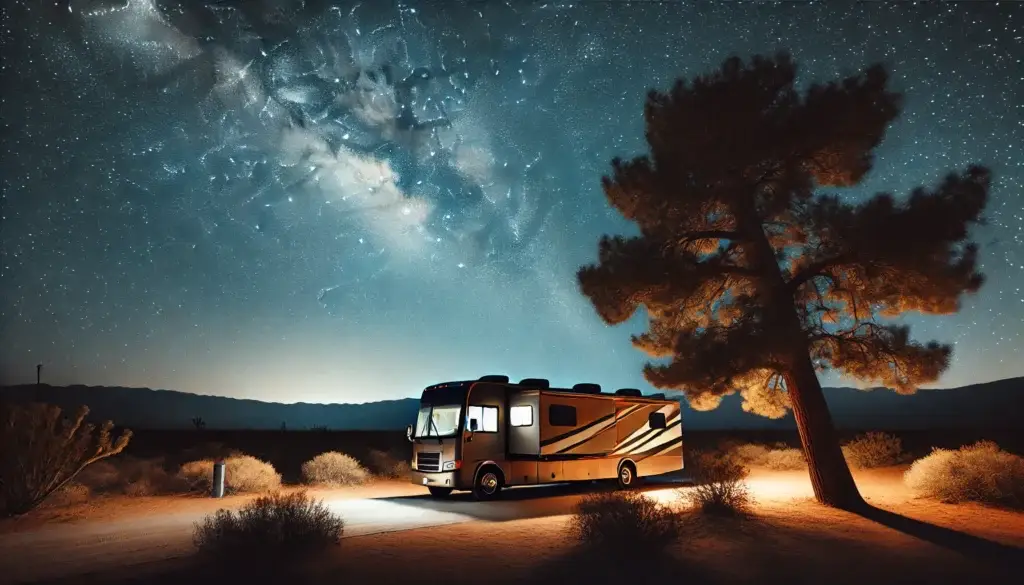Stargazing Road Trip – Capitol Reef → Great Basin → Chaco → Big Bend
“Park the rig, kill the lights, and let the Milky Way do the talking.”
Why winter? Early sunsets + crisp, dry air = longer, clearer starscapes with fewer crowds. If you’ve already “gone south,” this loop gives you bucket-list skies without the summer heat or traffic.
Quick Plan (West → East)
- Capitol Reef, Utah → Great Basin, Nevada → Chaco Culture, New Mexico → Big Bend, Texas
All four are renowned for dark skies; Capitol Reef and Big Bend are officially recognized as International Dark Sky Places, and Big Bend anchors the Greater Big Bend International Dark Sky Reserve, currently the largest certified Dark Sky Place in the world. (National Park Service)
When to Go: New-Moon Windows (Winter 2025–26)
Aim for ±3 days around these dates for the darkest nights:
- December 20, 2025
- January 18, 2026
- February 17, 2026 (annular solar eclipse at new moon—cool daytime note) (TheSkyLive)
Pro tip: even outside the exact new moon, winter’s long nights still deliver great viewing. Keep white light off screens and headlamps so your eyes fully dark-adapt.
Stop 1: Capitol Reef National Park (UT)
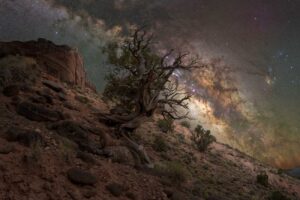 The feel: Red-rock silhouettes, cottonwood-lined canyons, and a Milky Way that looks spray-painted across the sky. Capitol Reef is an official International Dark Sky Park (since 2015), with near-pristine night skies in many pullouts. (National Park Service)
The feel: Red-rock silhouettes, cottonwood-lined canyons, and a Milky Way that looks spray-painted across the sky. Capitol Reef is an official International Dark Sky Park (since 2015), with near-pristine night skies in many pullouts. (National Park Service)
Where to aim your lens:
- Scenic Drive and nearby pullouts (check road status).
- Panorama Point and Sunset Point for foreground drama.
RV notes: Fruita Campground is open year-round; winter access is straightforward when dry/cold, and the off-season feel is magical. (National Park Service)
Narration beat for your readers: “Twenty minutes after the last glow leaves the cliffs, Orion clears the horizon and the Pleiades pop like diamond dust.”
Stop 2: Great Basin National Park (NV)
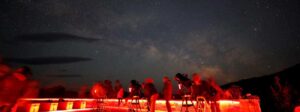 The feel: Some of the darkest skies in the Lower 48 with minimal light domes. When programs are in season, the park runs excellent astronomy talks and telescope viewings; in winter you’ll likely stargaze self-guided—quiet, cold, and crystal clear. (National Park Service)
The feel: Some of the darkest skies in the Lower 48 with minimal light domes. When programs are in season, the park runs excellent astronomy talks and telescope viewings; in winter you’ll likely stargaze self-guided—quiet, cold, and crystal clear. (National Park Service)
Where to set up:
- Astronomy Amphitheater/Lehman Caves area (lots of open sky).
- Pullouts along the Wheeler Peak Scenic Drive (as conditions allow).
RV notes: Winter services scale down; check road and facility status and plan to be self-sufficient overnight.
Narration beat: “The Andromeda Galaxy shows as a soft oval; a 10–20-second phone exposure will actually catch it.”
Stop 3: Chaco Culture National Historical Park (NM)
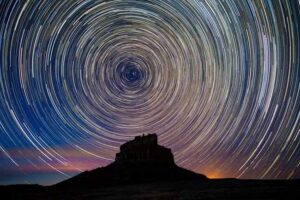 The feel: Ancient walls under a massive sky. Chaco’s great houses align to celestial events, which makes the stars feel like part of the architecture. Roads include long unpaved stretches; the final miles can be impassable when wet—watch the forecast closely. (National Park Service)
The feel: Ancient walls under a massive sky. Chaco’s great houses align to celestial events, which makes the stars feel like part of the architecture. Roads include long unpaved stretches; the final miles can be impassable when wet—watch the forecast closely. (National Park Service)
RV notes: Gallo Campground accommodates RVs, but RVs/trailers over ~35′ aren’t permitted to drive the park roads; generators have limited hours. Arrive on a dry day and take it slow. (Recreation.gov)
Where to stand in awe:
- Night skies near the campground or designated viewing areas (respect closures and cultural resources).
Narration beat: “The same ribbon of stars the Chacoans watched now arches over your camp chair.”
Stop 4: Big Bend National Park (TX)
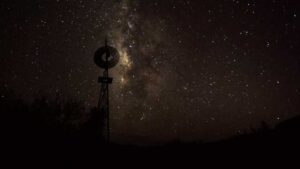 The feel: Texas-big sky, true darkness, and desert silhouettes for days. Big Bend is celebrated for having some of the darkest night skies in the Lower 48, and it anchors the Greater Big Bend International Dark Sky Reserve, the largest certified Dark Sky Place on Earth as of 2022. (National Park Service)
The feel: Texas-big sky, true darkness, and desert silhouettes for days. Big Bend is celebrated for having some of the darkest night skies in the Lower 48, and it anchors the Greater Big Bend International Dark Sky Reserve, the largest certified Dark Sky Place on Earth as of 2022. (National Park Service)
Where to aim:
- Rio Grande Village (wide, flat horizons).
- Chisos Basin overlooks for foreground peaks (watch road grades).
- Any pullout far from headlights—park smart and stay visible to traffic.
RV notes: Full-hookup sites are available at Rio Grande Village RV Park; the rest of the park is dry-camping with varying lengths and grades. Book early for hookups; shoulder dates help. (Also know that regional light-pollution efforts are ongoing—dark skies remain fantastic, but vigilance matters.) (National Park Service)
What to Pack (Keep It Simple)
- Red-light headlamps (or use red mode; tape over white LEDs in a pinch).
- Binoculars (7×50 or 10×50 are perfect star-boosters).
- Tripod + phone long-exposure mode (even 10–20 sec captures the Milky Way).
- Warm kit (insulated boots, beanie, hand warmers, thermos; desert cold cuts deeper than you think).
- Star apps (Stellarium, Sky Guide) and a printed plan for when phones stay dark.
- Camp chair + blanket—comfort increases how long you’ll stay out.
Etiquette & Safety (Share This With Your Listeners)
- Lights out: Switch everything to red (including phones and lanterns). White light resets night vision for everyone nearby.
- Eyes need ~30 minutes to adapt. Sip something hot and let your sky get brighter.
- Stay found: Park in obvious areas and use hazard triangles if you’re near a road.
- Respect culture: Especially at Chaco—stay on open routes, never climb or touch ruins. (National Park Service)
- Weather = king: Wind and cold can end a session quickly. Layer up and have a “hot-drink break” timer.
5-Night Sampler Itinerary (Easy Pace)
Night 1 – Capitol Reef (Torrey, UT):
Arrive mid-afternoon, scout a Scenic Drive pullout, early dinner, then stargaze 60–90 minutes after dusk. (National Park Service)
Night 2 – Great Basin (Baker, NV):
Transit day. Set up near the visitor-center area/Amphitheater; try a simple phone long-exposure on Orion and the Pleiades. (National Park Service)
Night 3 – Transit Buffer / Weather Flex:
Use this night to slide southeast, check forecasts, and time your Chaco arrival for dry-road conditions. (National Park Service)
Night 4 – Chaco Culture (Nageezi, NM):
Roll in with daylight and clear weather; keep the session short, quiet, and respectful. (Recreation.gov)
Night 5 – Big Bend (Rio Grande Village):
Hook up, nap, then enjoy a two-session night: twilight silhouettes and midnight Milky Way band if sky conditions allow. (National Park Service)
“What Will I See?”
- Orion dominates winter evenings (look for the three-star belt).
- The Pleiades (M45)—tight blue cluster; binocular candy.
- Andromeda Galaxy (M31)—a faint smudge to the naked eye, obvious in binoculars and short phone exposures.
- Milky Way is subtler in mid-winter than summer, but in truly dark parks it still spans the sky—especially toward the morning hours.
Troubleshooting Your First Night
- Sky looks dull? Give your eyes more time, kill every white light, and shield distant lamps with your vehicle.
- Can’t focus your phone? Tap a bright star, lock focus/exposure if your app allows, and try 10–20 seconds on a tripod.
- Too cold to stay out? Take breaks. A five-minute warm-up inside extends your session by an hour.
RV Park & Access Notes (Snapshot)
- Capitol Reef: Year-round stargazing opportunities; winter nights are excellent and crowds are low. (National Park Service)
- Great Basin: Expect reduced programming in winter; self-guided viewing is the move. (National Park Service)
- Chaco Culture: Unpaved access (last miles); do not attempt if wet. RV length limit ~35′, generator hours limited at Gallo Campground. (National Park Service)
- Big Bend: Among the darkest skies in the Lower 48; part of the world’s largest certified Dark Sky Reserve (U.S./Mexico bi-national). (National Park Service)
Have A Good Night Smart RVers
Four parks, one sky—and the exact same stars that guided ancient builders, cowhands, and the first long-haul RVers. Park the rig, kill the lights, and let the Milky Way do the talking.
